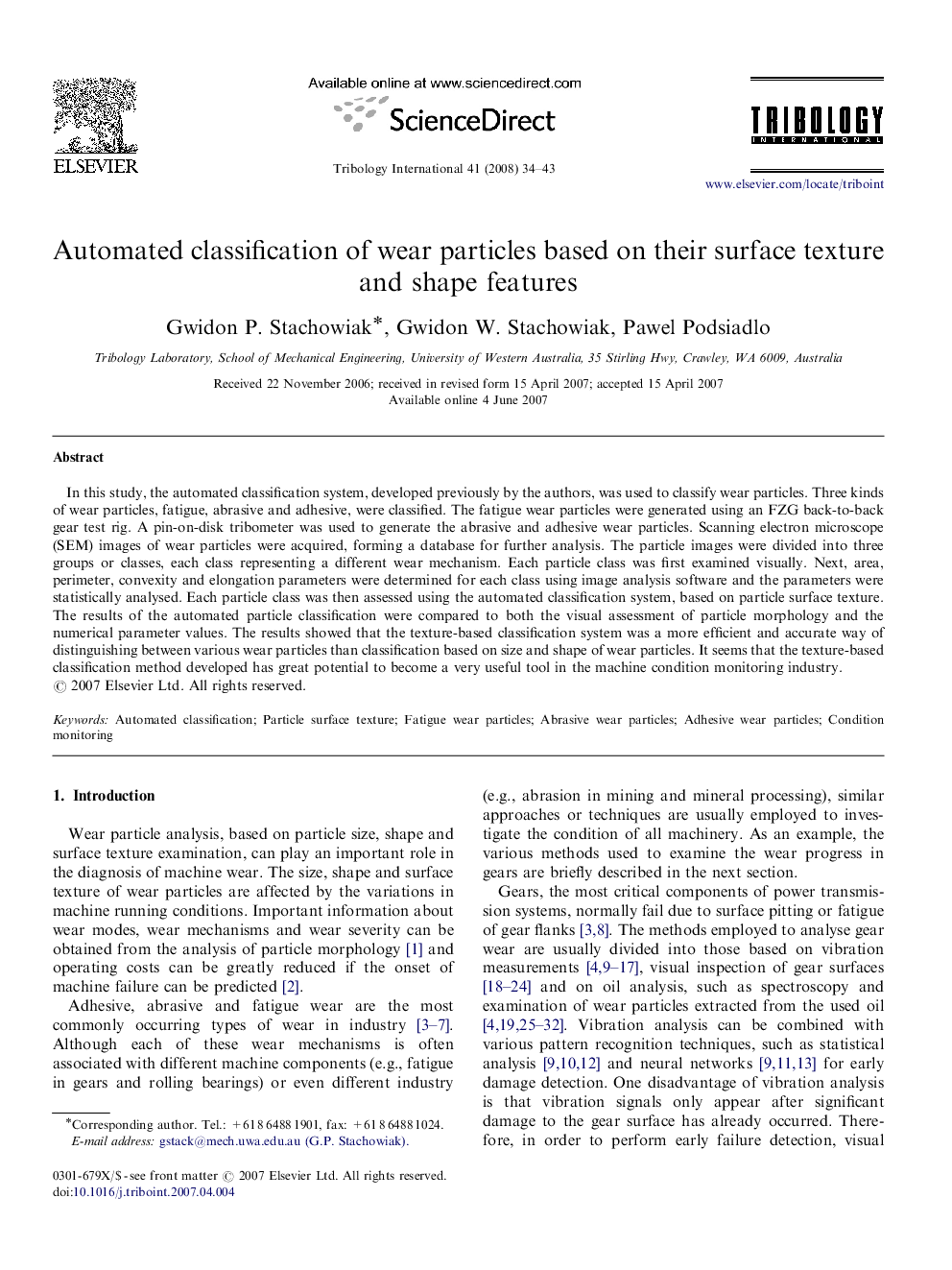| Article ID | Journal | Published Year | Pages | File Type |
|---|---|---|---|---|
| 616541 | Tribology International | 2008 | 10 Pages |
In this study, the automated classification system, developed previously by the authors, was used to classify wear particles. Three kinds of wear particles, fatigue, abrasive and adhesive, were classified. The fatigue wear particles were generated using an FZG back-to-back gear test rig. A pin-on-disk tribometer was used to generate the abrasive and adhesive wear particles. Scanning electron microscope (SEM) images of wear particles were acquired, forming a database for further analysis. The particle images were divided into three groups or classes, each class representing a different wear mechanism. Each particle class was first examined visually. Next, area, perimeter, convexity and elongation parameters were determined for each class using image analysis software and the parameters were statistically analysed. Each particle class was then assessed using the automated classification system, based on particle surface texture. The results of the automated particle classification were compared to both the visual assessment of particle morphology and the numerical parameter values. The results showed that the texture-based classification system was a more efficient and accurate way of distinguishing between various wear particles than classification based on size and shape of wear particles. It seems that the texture-based classification method developed has great potential to become a very useful tool in the machine condition monitoring industry.
